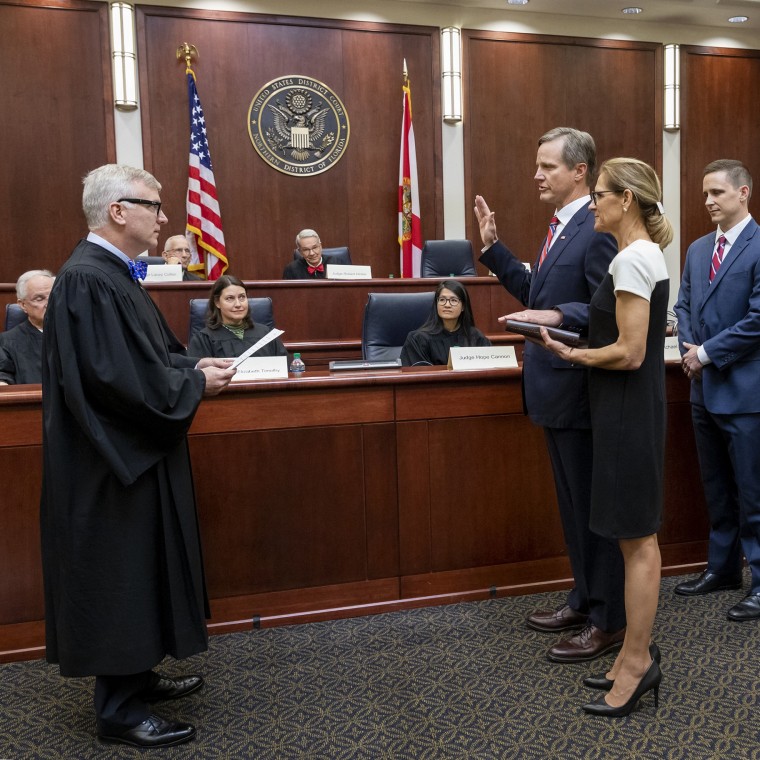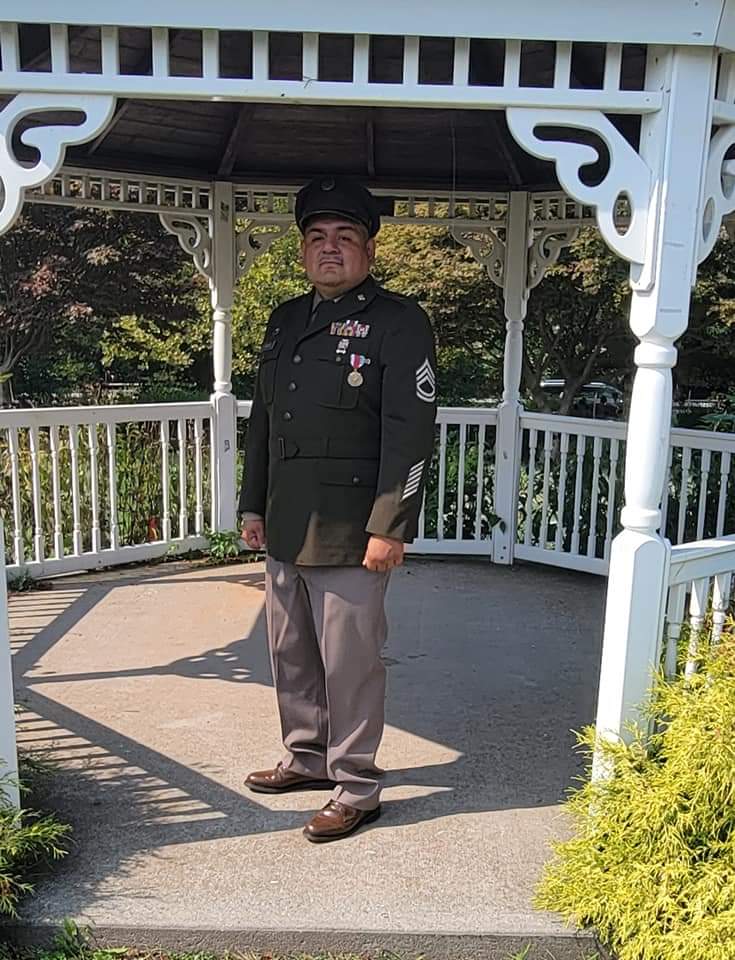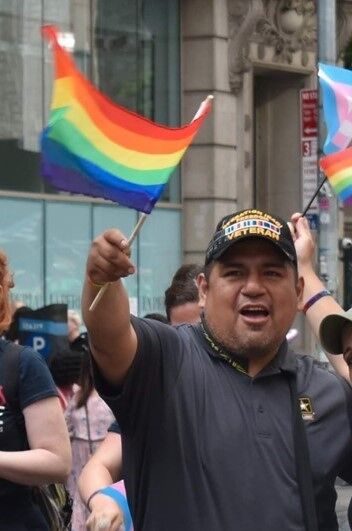Federal judge temporarily blocks teacher pronoun restriction in Florida
A federal judge on Tuesday temporarily blocked a law in Florida that barred a transgender teacher from using pronouns that don’t align with her birth sex.
Chief U.S. District Judge Mark Walker granted transgender teacher Katie Wood a temporary injunction against the law, writing in a strongly worded opinion that it violates her First Amendment rights.
“Once again, the State of Florida has a First Amendment problem,” Walker wrote. “Of late, it has happened so frequently, some might say you can set your clock by it.”
“This time,” Walker continued, “the State of Florida declares that it has the absolute authority to redefine your identity if you choose to teach in a public school. So, the question before this Court is whether the First Amendment permits the State to dictate, without limitation, how public-school teachers refer to themselves when communicating to students. The answer is a thunderous ‘no.’”
The Florida Department of Education did not immediately return a request for comment.
Wood and two other teachers, one who is also a trans woman and one who is nonbinary, filed a lawsuit in December in the U.S. District Court for the Northern District of Florida over the state’s Parental Rights in Education act, or what critics have dubbed the “Don’t Say Gay” law, which bars teachers from using pronouns or titles that don’t align with their birth sex.

When Republican Gov. Ron DeSantis initially signed the law in March 2022, it prohibited “classroom instruction” on “sexual orientation or gender identity” in kindergarten through third grade “or in a manner that is not age-appropriate or developmentally appropriate.” DeSantis signed an expansion to the measure in May 2023 that prohibits such classroom instruction from prekindergarten through eighth grade, restricts health education in sixth through 12th grade, and bars teachers and students from using pronouns and titles that don’t align with their birth sex.
When DeSantis signed the expanded law, he said that Florida would not do “the pronoun Olympics” and that teachers and students would “never be forced to declare pronouns in school or be forced to use pronouns not based on biological sex.”
Wood, who has taught math at Lennard High School in Hillsborough County since the 2021-22 school year, said in the lawsuit that her district was supportive of her identity and that her students knew her by “Ms. Wood.” However, under the new law, she was prohibited from asking students to call her Ms. Wood because she was assigned male at birth, and she couldn’t correct them if they misgendered her and called her “Mr.” or by “he” and “him” pronouns. As a result, she asked students to call her “Teacher Wood,” which she said made her feel stigmatized, since no other teachers at the school use that title.
Hillsborough County Public Schools did not immediately return a request for comment.
Another plaintiff in the lawsuit, AV Schwandes, was fired in October 2023 for using the gender-neutral honorific “Mx.” The third plaintiff, Jane Doe, came out as trans in 2021 and has been working as a teacher in Lee County Schools since the 2017-18 school year.
The three plaintiffs argued that Florida’s law discriminates against them on the basis of sex and violates Title VII of the Civil Rights Act of 1964, the equal protection clause of the 14th Amendment and Title IX of the Education Amendments of 1972.
They also argued that it violates their First Amendment free speech rights, and Wood and Schwandes asked the court for a preliminary injunction to block enforcement of the law while their case is ongoing. Walker granted the injunction for Wood in part because Walker said her free speech rights were violated and the violation was ongoing. He denied the injunction for Schwandes since they had been fired from their job and were not facing a continued violation of such rights.
“I am hopeful that this ruling will encourage those who feel powerless to stand up for themselves,” Wood said in a statement Wednesday. “Where there is pain, there is power. And anything can happen when good people stand up together.”
Walker, a Florida native who was appointed to the court by President Barack Obama in 2012, quoted Walt Whitman’s “Song of Myself” in his opinion granting the injunction for Wood.

“In sharing her preferred title and pronouns, Ms. Wood celebrates herself and sings herself—not in a disruptive or coercive way, but in a way that subtly vindicates her identity, her dignity, and her humanity,” Walker wrote. The section of Florida’s law that prohibits her from using the pronouns of her gender identity “has silenced her and, by silencing her, forced her to inhabit an identity that is not her own.”
“The State of Florida has not justified this grave restraint, and so the United States Constitution does not tolerate it,” he wrote. “Ours is a Union of individuals, celebrating ourselves and singing ourselves and being ourselves without apology.”
Walker is expected to issue an additional decision soon on the state’s motion to dismiss the case.

